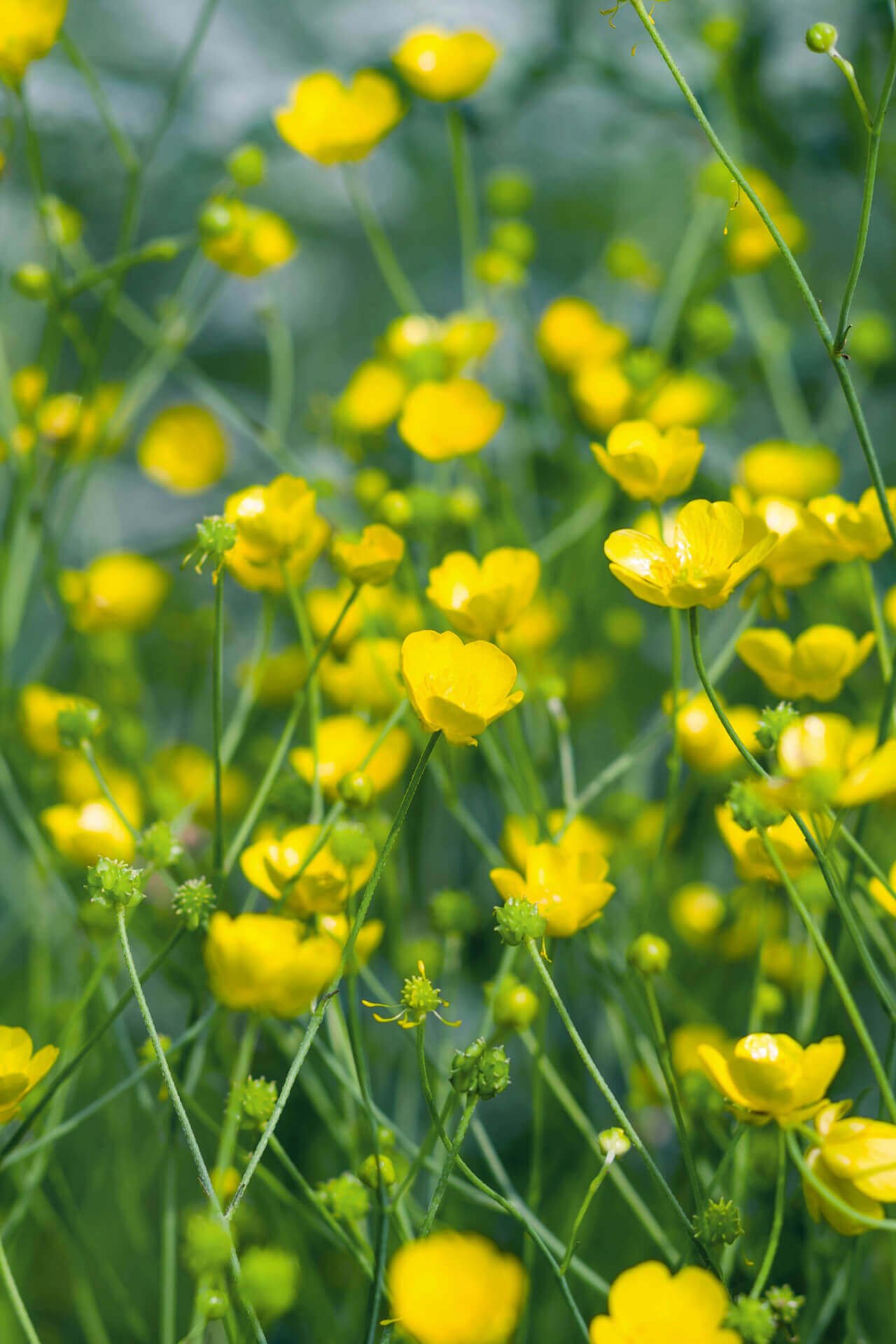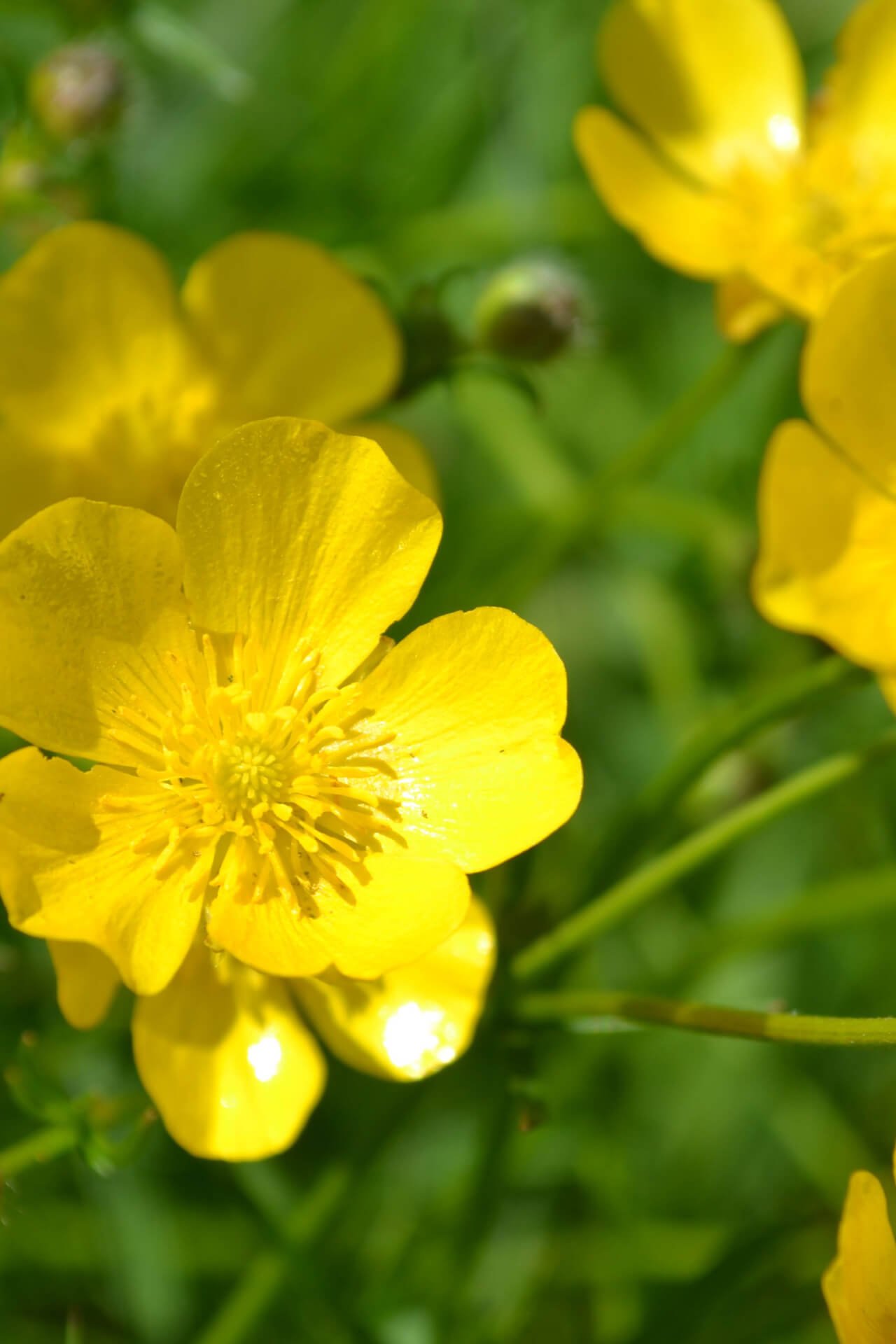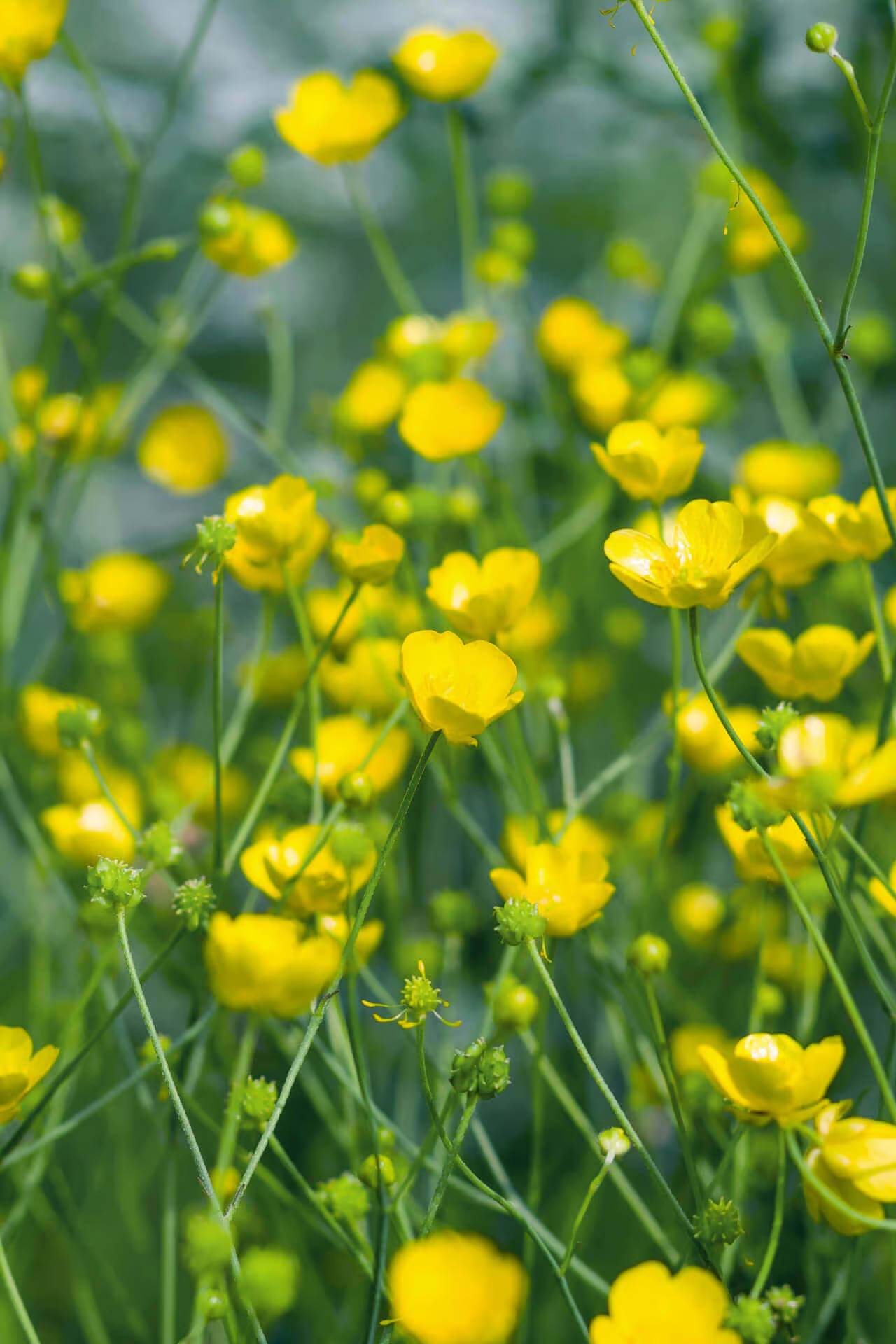



Hairy Buttercup
Natural ground cover option
Resilient in various climates
Supports local biodiversity health
Thrives in
ZONE 3ZONE 4ZONE 5ZONE 6ZONE 7ZONE 8This plant ships:
Ships Week of May 19th1 Year Guarantee on all plants
Hairy Buttercup - Ranunculus sardous
The Hairy Buttercup is a close sibling of the Creeping Buttercup, and gets its name from its hairy stem. This wild is native to the Canary Islands, North Africa and Europe and was introduced to the United States where it is now considered invasive. The hardy, winter annual is commonly found in wetlands, especially in eastern US states.
Plant Details - Hairy Buttercup
Family: Ranunculaceae
Light Requirement: Full sun
Water Needs: Moderate - Heavy
Height: Up to 20 in
Spread: 3-8 in
Growth Rate: Rapid
Soil Preference: Moist, Well-drained
Bloom Time: April - June
Flower Color: Yellow
Wildlife Value: Attracts pollinators
Notable Characteristics - Hairy Buttercup
The Hairy Buttercup is an adorable yellow blossom atop a mess of green leaves. The stem is sturdy and tall with multiple branches, which are covered in thick, white hairs. The leaves are thin with multiple leaflets, creating a lacy effect in their foliage. The flowers themselves have five petals and five, relaxed sepals which curve back from the petals and point downwards. The unique sepal position is a good way to distinguish this plant from its Ranunculus siblings. Unlike the Creeping Buttercup, these hairy flowers have no stolens, horizontal stems that grow above the soil. Instead of pushing out new buds along the ground, this plant grows straight up reaching 20 in under good conditions.
Landscape and Maintenance
This weedy, delicate plant favors meadows, fields, pond margins and low lands, as it prefers moist, well-drained soil. The hardy plant thrives in disturbed or otherwise anthropogenic areas because it can grow untamed. The wild, lush, plants provide pollinators with nectar and pollen, attracting bees, butterflies, wasps and flies. The yellow blooms may quickly outcompete native turf in your lawn or garden, and will easily evade the mower because they grow so low to the ground. Take care to cut them back where they are unwanted! Despite their aggressive nature, the Hairy Buttercup is a cheerful beauty to find in your garden through the spring.
This Is How Your Plants Will Look upon Delivery

Bloom Season
Spring
Bloom/Foliage Color
Yellow
Height at Maturity
Under 12"
Care
Hairy Buttercup thrives in well-drained soil and needs frequent watering, especially during dry periods. Ensure the soil remains consistently moist but not soggy. Regularly check for pests and remove any dead or diseased foliage to maintain plant health.
Plant Reproduction
Hairy Buttercup spreads by seed
Shipping date depends on the date displayed and chosen when you order from the product's page.
We only accept returns on plants verified dead. If you think your plants have died, we offer a 1 year warranty, please use this File a Claim Link to verify dead plants and start with return warranty process.






Bright Yellow Blooms:
Hairy Buttercup produces vibrant yellow flowers that add a cheerful splash of color to any garden.
Hardy and Resilient:
This plant is tough and can thrive in various soil conditions, making it a low-maintenance addition to your garden.
Ground Coverage:
Hairy Buttercup spreads easily, providing excellent ground cover and helping to prevent soil erosion.
Attracts Pollinators:
The flowers are attractive to bees and butterflies, helping to support a healthy garden ecosystem.
Caring Tips
How do I care for my Hairy Buttercup?
Each box contains detailed care instructions and information about your product. But here's the basics.
Care Tips
Hairy Buttercup thrives in well-drained soil and needs frequent watering, especially during dry periods. Ensure the soil remains consistently moist but not soggy. Regularly check for pests and remove any dead or diseased foliage to maintain plant health.
Light Requirements
Hairy Buttercup (Ranunculus sardous) thrives partially to fully in the sun. It favors bright light but can accept some shade. Ensuring adequate light exposure will help it maintain its vibrant yellow blooms and overall health.
Hardy Planting Zones
3 • 4 • 5 • 6 • 7 • 8
Header
Use this content to share information about your store and products.
Frequently Asked Questions
How often should I water my plants?
How do I know if my plant is getting too much or too little sunlight?
What should I do to prepare my plants for winter?
What are the signs that my plant needs fertilizing?
How can I prevent pests from damaging my plants?
How do I choose the right plant for my climate zone?






